- Home
- Stephen Baxter
Doctor Who: The Wheel of Ice Page 3
Doctor Who: The Wheel of Ice Read online
Page 3
‘We’ve no suspects.’ Sonia sighed. ‘We’ve been through this, Florian. I don’t deny there have been incidents.’
‘“Incidents”!’
‘I’ve no reason to call it “sabotage”. There’s no evidence that the incidents of damage have in any way been organised, motivated. And despite heavy surveillance we’ve no confirmed perpetrators. Unless you have something you haven’t shown us. I mean, it’s Bootstrap systems that have the mines under surveillance, not ISC.’
‘It’s the kids. It has to be.’
‘So what would you have me do, Florian? Lock up everybody under the age of seventeen?’
‘A curfew would be a start.’
Luis Reyes grinned. ‘Might work, as long as we could make sure the Blue Dolls obeyed the curfew, too.’
‘Oh, for crying out loud.’ Florian sat back in her chair in disgust.
Sinbad tapped the slate in front of him on the table; data flowed across its surface. ‘There have been more of these strange sightings. Most by very young children – including your little Casey, Jo. With kids that age it’s difficult to pin anything down. But I’ve no clinical evidence that they’re suffering from any kind of mass delusion, or that there’s any environmental factor that might be causing this—’
Florian snorted. ‘The damn kids are pulling our chains. It’s all a hoax.’
Sinbad laughed. ‘What, a hoax organised by three-year-olds?’
Jo let the arguments flow on, wondering when she could bring them back to the meeting’s actual agenda items, the next of which concerned a plumbing problem in the Recreation sector.
Then her own slate flashed, with a puzzling text message. She tapped out a reply. Phee? What do you mean, you picked up three refugees?
5
AT THAT MOMENT, two of those refugees stood with Phee Laws in the open doorway of the TARDIS, peering out at the approaching Wheel. The third, Jamie, stood behind Zoe and the Doctor. Zoe suspected he was more than a little disturbed by vertigo from standing in a doorway open to space – as she was herself, but since that feeling was purely physical and not at all logical she put it firmly aside.
And she had to admit the view was spectacular. The cable, firmly tied to the TARDIS’s console, snaked out to the battered hulk of MMAC, the spidery space-borne robot that had rescued them. And beyond MMAC lay the Wheel of Ice, the Mnemosyne Cincture. Mnemosyne itself – Ne-mo-seen, it had taken Jamie some practice to say it correctly – was a tiny moon, a shapeless lump of ice about a kilometre across, set at the centre of the Wheel. Small it might be but its tiny gravity field had played a part in shaping the structure of the ring system hereabouts, and the moon lay in one of a thousand fine gaps in the ring system. The shining ringlets, separated by these gaps, looked like strands of hair, finely combed and laid out in sweeping parallels.
And, small as it was, Mnemosyne had human visitors.
The Cincture – a posh word for ‘rim’ – was a bracelet four kilometres across, surrounding the little moon. The core of its structure was a mesh of looped cables, MMAC had explained, as tough and light as the cable he was using to tow in the TARDIS. And on that thread was strung a series of spheres and ovals, bubbles blown from ice from the captive moon, some hundreds of metres across. Most sparked with artificial light, but others glowed dimly orange by the light of Saturn. The bubbles were colonised; people lived in there. In some of them Zoe could make out the green of growing things – even what looked like a captive forest. The ice bubbles were a chain of worlds in bottles, like snow globes.
And interspersed with the ice bubbles were smaller, blockier, opaque shapes, cones and cylinders of metal and ceramic, many of them faded from long exposure to space, long-dead rocket nozzles gaping. It was evident these space hulks hadn’t been manufactured for the purpose, but brought here from somewhere else for reuse, salvaged, modified, and integrated into the Wheel’s structure.
The Wheel was a working place. Cables dangled down from the ice bubbles and metal hulks to trail on the surface of the moon at the centre, scraping along a metal roadway built around the moon’s rough equator. The whole arrangement was like a bicycle wheel, the cables like spokes reaching in from the rim to the hub. As Zoe watched, flecks of light passed up and down the cables, people travelling to and from their workplace on the central moon.
This whole remarkable ragtag structure turned around that little moon. Zoe timed its rotation by her own calm pulse. One complete turn every three and a half minutes, she estimated.
The Doctor turned to her. ‘So, what do you make of it? Rather impressive, don’t you think?’
She snorted. ‘Rather primitive, more like. That rotation—’
‘Yes?’
‘Clearly intended to generate the sense of gravity through centripetal force.’
‘Umm, well, that and to provide dynamic stability.’
‘A rotation of three and a half minutes and radius of two kilometres would yield a spin gravity of one point eight metres per second squared.’
‘About a sixth of Earth’s – about the moon’s gravity. Well, that’s elementary, Zoe.’
‘Yes, but what it tells us is that they have no true artificial gravity system!’
‘Unlike your own Station Three, you mean.’
‘And then there’s the green.’
‘The green?’
‘Look at that ice bubble, and that one. Chlorophyll green! Doctor, they are growing their food here. Growing it!’
‘Rather nice to have a bit of grass growing. Trees, in Saturn’s light.’
‘It’s clear they have no modern food-dispensing machines.’
‘“Modern”,’ he said, with a slightly sterner edge to his voice. ‘Remember, Zoe, this is not your time. Not quite. Such things as artificial gravity may not have been invented yet. Or it may be it’s just too expensive… But here these people are, mining a moon of Saturn even without all those advantages. Isn’t that rather marvellous?’
No, she felt like replying. No. It’s – it’s – inefficient. But she suspected such an answer would be illogical. Emotional. She had wrestled with this sort of reaction before. She had come with the Doctor to break out of her own world, her narrow background. She hadn’t expected it would sometimes be so difficult.
The Doctor said now, ‘I’m rather puzzled by that little moon, however. It looks rather like a fragment left over from a much larger body, doesn’t it?’
And Zoe saw that he was right, and remembered that the TARDIS had landed here expecting a much larger moon – a moon perhaps already destroyed by the hole in time. ‘What do you think it means, Doctor?’
‘What it means is that I don’t see some glorious natural spectacle here, in these rings, that moon. I see the aftermath of some disaster, deep in time. An explosion of a moon perhaps, an explosion that reduced the moon itself to that rump, and scattered debris through space to become these rings. Zoe, I suspect that the rings of Saturn are no more a wonder of nature than the mushroom cloud of a nuclear detonation… Oh, I say. Isn’t that a Phoenix-class freighter?’ He pointed at a large streamlined vessel docked to one of the substructures, evidently newer than the hulks in the Wheel.
‘Mark II-A,’ MMAC replied. ‘Aye, that’s the Jim Daniels come to resupply us. A pretty wee vessel, Doctor? Better than the old Eldred ion-jet scows that used to limp out here. A conn-oo-sewer of spacecraft, are ye, sir?’
It took Zoe a moment to decode that word: connoisseur.
‘Not exactly,’ said the Doctor. ‘But I have found myself on rather a lot of them over the years. Usually locked up on one, or escaping at speed from another, which doesn’t always afford the best of views… By Jove. Isn’t that one of the old Mars probes, the early English ones?’
This was a cone sat atop a cylinder, with three landing legs. Beside it was a spent booster stage labelled ‘GB-UK-R’ in faded lettering. Both these derelicts had been threaded by the base cables and adapted for habitation; windows had been cut into the hull of the booster.
MMAC sounded offended. ‘English? Naw. British, if ye must. Scottish, if ye’re truthful about the engineering nous that went into yon spaceships. Even if they were used to shoot English public schoolboys off to Mars. Many o’ these are test articles, that were left abandoned in orbit or jes’ driftin’.’
‘But salvageable. And very valuable, given the cost of launching raw materials into space.’
‘That’s the idea. Took me years tae assemble this lot.’
‘This was all your work, MMAC? The whole of the Wheel?’
‘Oh, aye,’ the robot said modestly. ‘I were out here on ma aen for a few years, puttin’ together the base afore the first people came out. Ye canna get any mining done if there’s no’ a working cludgie, can ye?’
Zoe whispered, ‘“Cludgie”?’
‘I think he means – ah – a sanitary recycling facility, Zoe. Tell me, MMAC, was this one of the first colonies out here at Saturn?’
‘The verra first minin’ effort, so I believe, after the exploratory flights. A proposal started by the Laws family – that’s Phee’s family – and took up by Bootstrap, the mining consortium.’
‘But I imagine you built on experience gained closer to Earth – at Jupiter, for example.’
‘Jupiter? Nae – there were little gannin’ on in that system when they first sent me oot here.’
‘Really? That’s odd. But Jupiter’s only half the distance from the sun, compared to Saturn.’ The Doctor was frowning now, rubbing his chin, a thoughtful look Zoe knew well. He was intrigued, suspicious, on the trail of something – perhaps the mystery that had brought the TARDIS to this time and place. ‘There must be a reason why those first colonists made a beeline for this planet, this little moon. Even if they didn’t know it themse
lves…’
MMAC was still reminiscing. ‘Aye, it wa’ a proud day when the folks moved in, and ma work were done.’
‘And what is your role noo – I mean, now, MMAC?’
MMAC was vague. ‘This and that, ye know… Look down there, Doctor, at about four o’clock. What d’ye mek of that beauty?’
‘My word. That’s an XK5 – or what’s left of it.’
‘An experimental deep-space ship,’ Zoe said.
‘Well remembered, Zoe.’ The remains of the XK5 were a clutch of bronze-coloured cylinders, disassembled and strung out on the cable. ‘And next to it – are those Demeters, MMAC?’
‘Aye. Bomb-carrying missiles from another century, shot off into space and abandoned when they had a spasm o’ peace-making. Some of them still had warheads – Z-bomb planetbusters – and I had to make sure they were disarmed and cleaned out.’
‘There’s some lovely stuff here, MMAC. It’s like a museum.’
‘Ye like museums, Doctor?’
‘Oh, I’ve seen many museum exhibits in my time. I’ve been an exhibit more than once…’
‘I’ve go’ this laing-term plan. Call it a dream.’
‘A dream?’
‘One day, when the mining’s done, this place’ll be abandoned. So then mebbe I’ll refurbish these old hulks. Turn it into a proper museum o’ the early space age. Or mebbe sell ’em off tae collectors for a bit of cash!’ He laughed, a throaty, convincing simulation.
Zoe snorted. ‘An antiquated artificial intelligence – with a dream!’
The Doctor said mildly, ‘Well, everyone must have a dream, Zoe. Even an “antiquated artificial intelligence”.’
Jamie, behind them, said, ‘Doctor, yon wheelie is getting awful close.’
‘So it is.’
‘And it’s turnin’ awful fast.’
Zoe worked it out quickly. ‘The modules in the Wheel are moving at about sixty metres a second. That’s over two hundred kilometres an hour. It’s going to be quite a rendezvous manoeuvre!’
‘Och, a piece o’ cake,’ MMAC called back. ‘Hang on tae yer sporrans!’
The spidery robot, towing the helpless TARDIS, swept down on the Wheel, and the universe was filled with rushing masses of ice and metal.
6
AT THE DOCKING port, cut into the side of a derelict Earth-moon freighter, the party was met by Phee’s mother, Jo Laws, the mayor of the Wheel. She was a rather harassed-looking woman in a wheelchair, with a small, sleepy child in her arms: her other daughter, Phee’s little sister Casey.
With her was a woman Jamie identified immediately as police, even before she opened her mouth, even though she wore no uniform, although she did have a mean-looking weapon at her side. She introduced herself as Sonia Paley, she was Marshal here on the Wheel, and she worked for a larger organisation called the International Space – something or other. This woman had an unmistakeably English accent, and everything in Jamie’s upbringing had led him to react strongly against English in authority. But he had been with the Doctor long enough to know when to keep his feelings hidden.
Led by Sonia and Jo, and with Phee Laws in dark glasses trailing along, they were led through the Wheel away from the docking port. There were walkways and partition floors laid down to give you a surface to walk on, but even that was odd because Jamie felt light as a feather, and if you weren’t careful you could bound up into the air with a single stride.
They were in a sector of the Wheel called Utilities, Sonia said. There were six sectors in all, each consisting of several ice bubbles and rocket hulks. Through the bubbles’ clear walls you could see Saturn, misty and huge, and the old ships were cones and tubes full of musty old acceleration couches and dead control panels. All these chambers were connected by doorways with big heavy metal hatches hanging open, ready to be sealed in an instant.
As they passed through the chambers of the Utilities sector, one after another, the Doctor had fun identifying their purposes. Here was a weather station, here was a computer centre, here was astronomy and guidance, a forest of bristling instruments, here was a maintenance section full of gadgets most of which Jamie couldn’t recognise but including reassuringly familiar items like mops and brooms and buckets. The power station was interesting, a hall of glowing spheres. ‘This is a solar stack,’ said the Doctor. ‘A suncatcher system.’ The power of the distant sun, collected by huge mirrors outside the module itself, was somehow stored in big ceramic spheres that glowed from within. The Doctor was fascinated. ‘A rather discredited old technology back on Earth, as I recall, but I can see the utility here.’
The most attractive places for Jamie were the farms, ice spheres full of green growing things. Some had beds of plants growing in pallets of earth, or in trays full of some kind of muddy liquid; others were like parks, with lawns of green grass growing, even stunted-looking trees. Jamie supposed they must have carried the soil here from Earth, and seeds for the grass, the plants. It was strange to think that everything he saw had been brought here by people, that nothing was natural. Still, the air was fresher here, more to Jamie’s taste, and he could smell the earth, the grass – even though there wasn’t a proper sun, just banks of bright floodlights fitted to the roofs of the bubbles.
They came to a new sector, called Residential Three. The architecture was crowded and ugly, blocky buildings with rooms stacked up on top of each other like the cells in a beehive. There was little colour, little decoration. But from some of the buildings hung big flags whose designs changed, every minute or so. There would be a bold corporate symbol, then faces of workers in spacesuits smiling happily, and then a motto in huge capitals:
COMMUNITY
IDENTITY
STABILITY
Most of the people Jamie overheard spoke English – and many of them had a trace of a Scottish accent, or so he thought, but that might have been wishful thinking.
But everywhere they passed, people stared. Evidently they weren’t used to strangers here. Even their clothing drew glances and whispered comments – Jamie’s kilt, the Doctor’s shabby coat, even Zoe’s practical jumpsuit. The people here were dressed much alike, in jumpsuits, or else in plain T-shirt and shorts or slacks like Phee’s. And the dominant colour scheme was purple. Jo herself wore purple, and Sonia and Phee, dressed predominantly in grey, stood out. Some of the youngsters, though, seemed to go in for a bit of decoration. Jamie spotted strips of purple cloth used as hair ribbons, and chunks of scrap metal and ceramic on bits of wire worn like necklaces or bracelets.
They came to an open area where kids were playing a kind of basketball, an unusual sight in a colony that seemed dedicated to hard work and discipline. The kids, tall and wearing sunglasses, ran and leapt impossibly high into the air, and a bit of Jamie longed to join in. But he saw markings etched into some of the walls, even the trunks of trees. Gang marks, said Phee: graffiti.
One bubble they passed through looked burned out, as if there had been a riot, or a small war, and Sonia hurried them through.
And in the next bubble Jamie saw a gang of kids in orange coveralls labouring to clear a demolished building. They had big letter Ds on their backs. Adults stood over them, watching. A punishment gang, then, in this garden in the sky…
In a narrow alleyway he thought he saw something odd out of the corner of his eye. Something running, scurrying into the shadows. Small, like a child. But blue, blue-skinned.
‘Hey. Did ye see that?’
Sonia turned. ‘What?’
‘Like a wee bairn, but blue.’
Phee said quickly, ‘There was nothing there. A trick of the light.’
‘But I saw it too,’ said Zoe.
Phee repeated, ‘There was nothing.’
‘Well, how can you be sure?’ Phee’s brisk, abrupt denials were making Zoe uncomfortable. She closed her eyes and summoned up the image she had seen: the wide street, the buildings, the brilliant lamps suspended from the bubble roof. She placed all the people she had seen in that brief glimpse in their correct positions, as if populating a photograph. Her memory was perfect, and she trusted it. The blue flash had been at the edge of her vision – but yes, there it was, a small, compact form, just glimpsed in her peripheral vision. And it had been holding something, a bulky metallic object, something almost as large as it was.

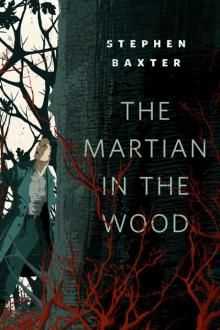 The Martian in the Wood
The Martian in the Wood THE H-BOMB GIRL
THE H-BOMB GIRL World Engine
World Engine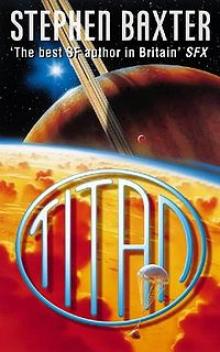 Titan n-2
Titan n-2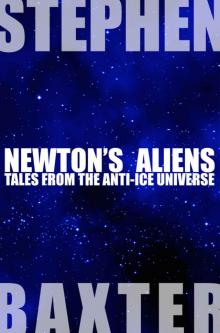 Newton's Aliens: Tales From the Anti-Ice Universe
Newton's Aliens: Tales From the Anti-Ice Universe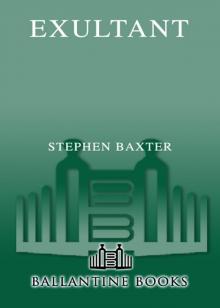 Exultant
Exultant Manifold: Origin
Manifold: Origin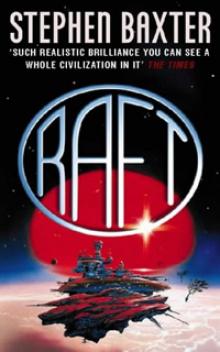 Raft xs-1
Raft xs-1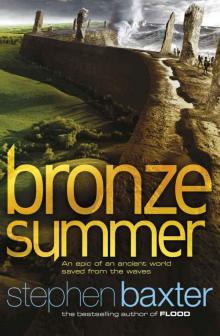 Bronze Summer n-2
Bronze Summer n-2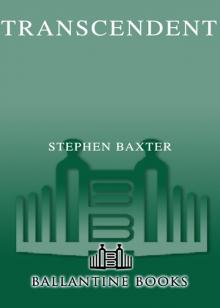 Transcendent
Transcendent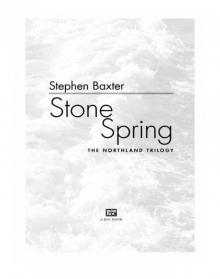 Stone Spring
Stone Spring Coalescent
Coalescent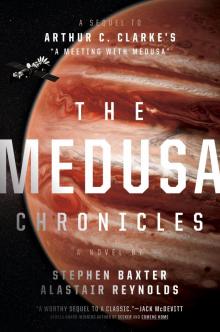 The Medusa Chronicles
The Medusa Chronicles Origin m-3
Origin m-3 Silverhair tm-1
Silverhair tm-1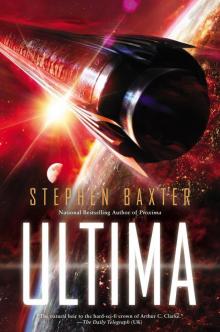 Ultima
Ultima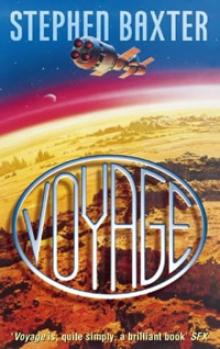 Voyage n-1
Voyage n-1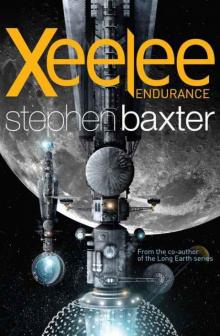 Xeelee: Endurance
Xeelee: Endurance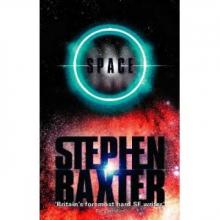 Space m-2
Space m-2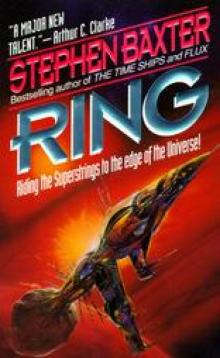 Ring xs-4
Ring xs-4 Raft
Raft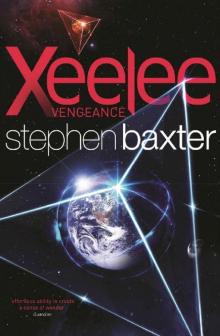 Xeelee: Vengeance
Xeelee: Vengeance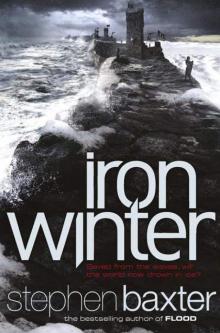 Iron Winter n-3
Iron Winter n-3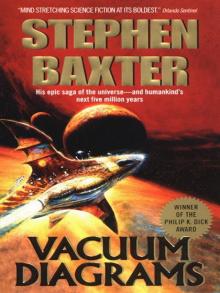 Vacuum Diagrams
Vacuum Diagrams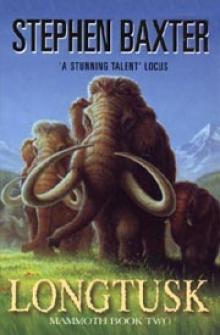 Longtusk tm-2
Longtusk tm-2 Proxima
Proxima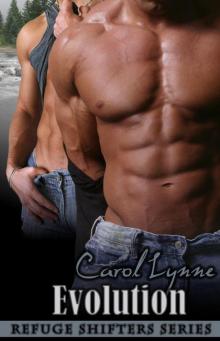 Evolution
Evolution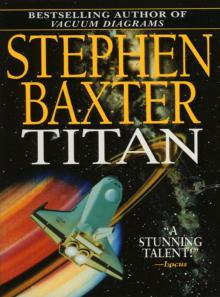 Titan
Titan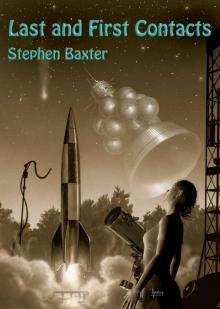 Last and First Contacts (Imaginings)
Last and First Contacts (Imaginings)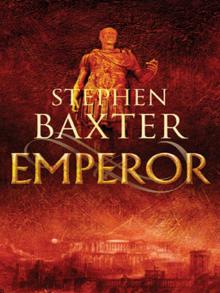 Emperor
Emperor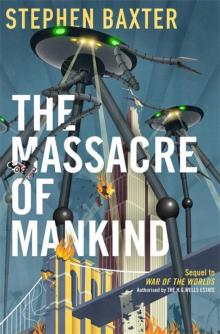 The Massacre of Mankind
The Massacre of Mankind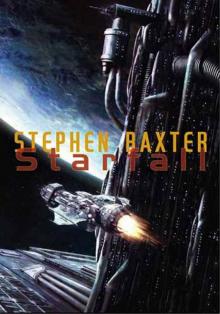 Starfall
Starfall Doctor Who - The Wheel of Ice
Doctor Who - The Wheel of Ice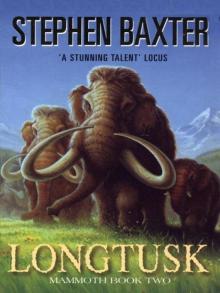 Longtusk
Longtusk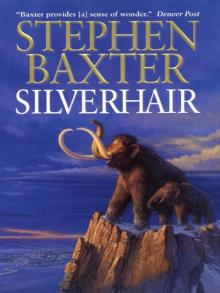 Silverhair
Silverhair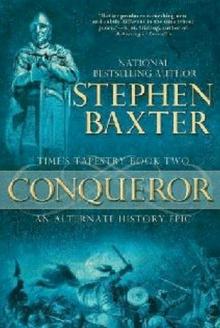 Conqueror tt-2
Conqueror tt-2 Flood
Flood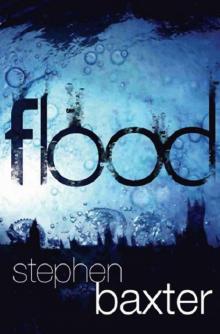 Flood f-1
Flood f-1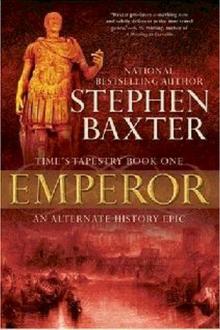 Emperor tt-1
Emperor tt-1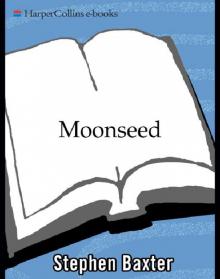 Moonseed
Moonseed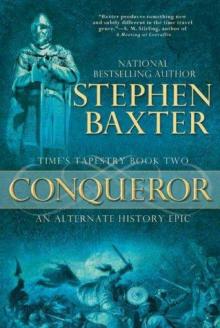 Conqueror
Conqueror Timelike Infinity xs-2
Timelike Infinity xs-2 The Ghost Pit
The Ghost Pit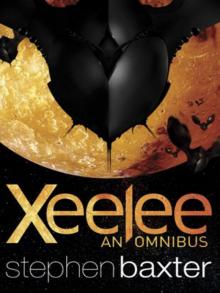 Xeelee: An Omnibus: Raft, Timelike Infinity, Flux, Ring
Xeelee: An Omnibus: Raft, Timelike Infinity, Flux, Ring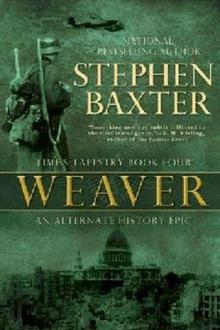 Weaver tt-4
Weaver tt-4 Landfall: Tales From the Flood/Ark Universe
Landfall: Tales From the Flood/Ark Universe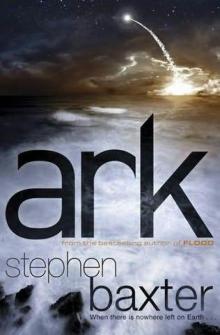 Ark
Ark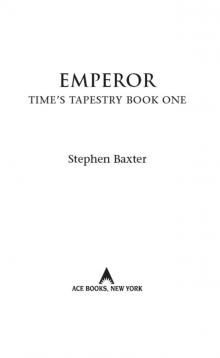 Emperor: Time’s Tapestry Book One
Emperor: Time’s Tapestry Book One Space
Space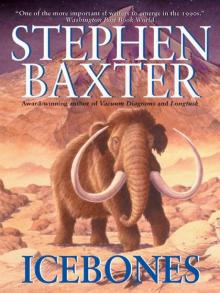 Icebones
Icebones Manifold: Space
Manifold: Space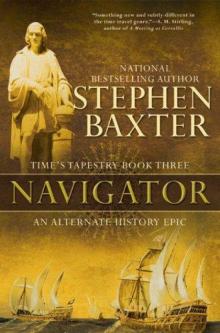 Navigator
Navigator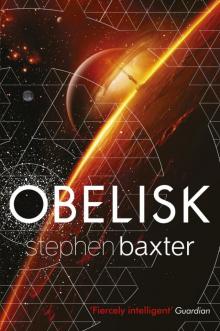 Obelisk
Obelisk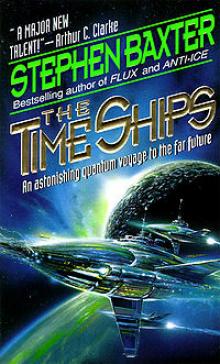 The Time Ships
The Time Ships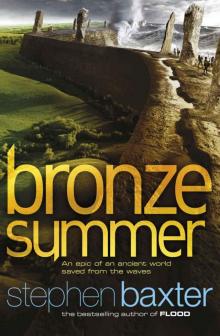 Bronze Summer
Bronze Summer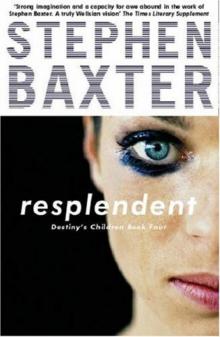 Resplendent
Resplendent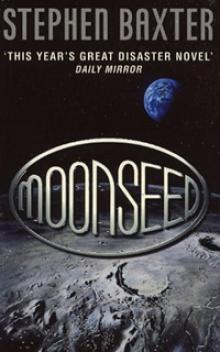 Moonseed n-3
Moonseed n-3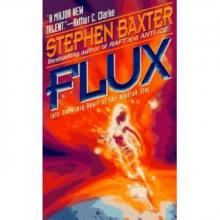 Flux xs-3
Flux xs-3 Transcendent dc-3
Transcendent dc-3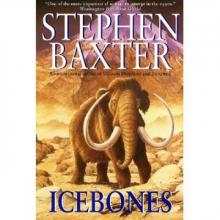 Icebones tm-3
Icebones tm-3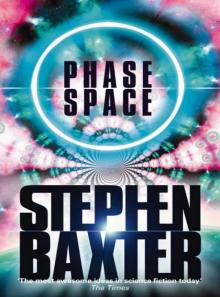 Phase Space
Phase Space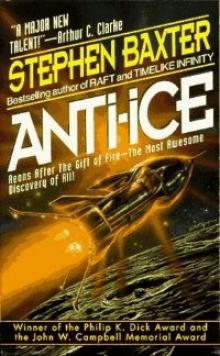 Anti-Ice
Anti-Ice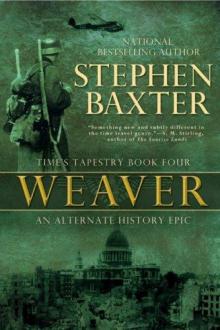 Weaver
Weaver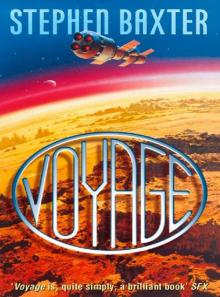 Voyage
Voyage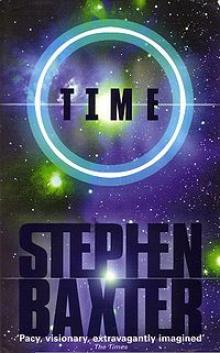 Time m-1
Time m-1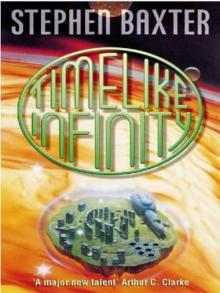 Timelike Infinity
Timelike Infinity Exultant dc-2
Exultant dc-2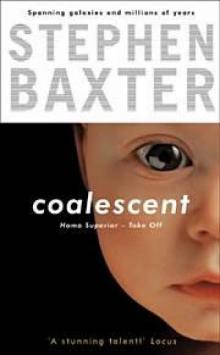 Coalescent dc-1
Coalescent dc-1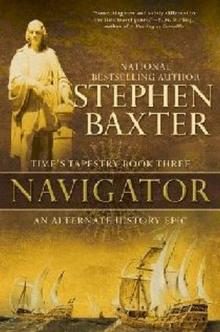 Navigator tt-3
Navigator tt-3